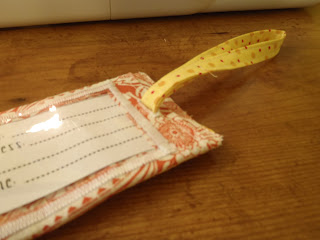 |
| Picture taken this week. |
We found this idea on Pinterest. I loved it. Sadly, I did not take pictures while we were doing it because we were kind of in a hurry once we got home with all the stuff. I'd gone to the Growers' Outlet up the street and just randomly bought two each of several plants I liked plus a huge tray of Marigolds for the pots in the back to keep bugs away. I had tons of Marigolds leftover. I was telling Scott about how I really needed some taller plant stands, etc...but that I'd settle for making the pot tower. His interest was peaked. We measured, planned, went to the store, and made some purchases.
We wanted a 6' piece of rebar, but could only find 10'. Then, we decided if we had to buy a 10' piece, we'd just use 6.5'. A guy at The Home Depot cut it down to 6.5' with a hack saw. Based on our measurements, the height of a pot ended up being about the diameter of the pot when we tilted it the way we thought they should be tilted. But, we ended up needing another pot, so apparently our calculations were off a bit. We hammered the rebar 18" into the ground, leaving 5' sticking out. I would suggest doing no less than 18", you could even cut your rebar down to 7' and hammer 2' for more sturdiness. Our neighbor came out when they saw our flurry of activity and helped. Then, made suggestions. When we realized we needed another pot, he suggested that we add in a colored pot. Wow the colored pot cost about three times the clay pot of the same size. But, I love it. If we decided to add another colored pot next year, I will invest in spray paint and just spray paint a pot we already have. We ended up using some pots I already had and buying the rest. We used 2-10" (one flower pot and one azalea pot), 2-8", 2-6" and then the blue pot which I would guess is about 8".
Once we'd hammered the rebar into the ground, we put one 8" pot upside down over the rebar (just slide the rebar through the drainage hole). I took a plastic grocery bag and put it down in each pot to line it then pushed a hole through the bag just over the drainage hole. I leave the handles sticking out and everything until I am done planting, then I trim them. This is important when you have a hot dry summer with clay pots because they release so much moisture through their pores. Then, we put the first 10" (right side up) over the rebar and held it in place slanted until we put the next 10" pot over it and once we got them slanted going in opposite directions of each other, they stayed. Then, we added the regular 8" pot, the blue pot, and the 2-6"s. The end product is probably 5-6" taller than me (I'm 5'1.5"), because we made sure that our top pot was on the rebar, but the rebar was not sticking out of it. For the rebar and the pots (including the cost of the two we already had), we paid approximately $50.
We filled each pot half full of dirt. Then, I hemmed and hawed and placed all the plants in different gatherings until I had decided what to do, then of course as I filled the pots, I changed my mind a couple of times or things just didn't fit the way I thought they would. I think that's how I ended up with the two Million Belles on the same side and the two Sweet Potato vines on the same side. After I put the plants in the way I liked them, I filled them the rest of the way with dirt, pressed it all down, and Scott followed after me with a box knife and cut the bag handles off and tucked them in the dirt. I probably used a little less than half of a big bag of potting soil that I had already purchased for my pots out back. I think it was 2 cubic feet and cost about $6.
The interesting part is watering them the first time when all the dirt is loose in a tilted pot. Watering is...fun. You have to just put a little water in each pot. If you put too much, it will run off and cause erosion onto the next pot's plant. I find that I enjoy our pot tower so much that I am more likely to remember to water it and to take the time to dead head all the flowers. The recent heat spell that came through has claimed one of the Marigolds, but thankfully it was in the back of that pot and since it was in there with a Million Belles, I am hoping no one can tell from the street. Lots of neighbors have stopped by to ask how we did it. It definitely adds height to our garden.
In case you are wondering, I used two white Gerbera Daisies, two purple Angelonia, one Sweet Potato vine that I had two little vines in it split into two pots, two yellow Million Belles, two pink Geraniums, two Blue Daze, and at least one Marigold in each pot except the top one, which was too small. Because I got the plants super cheap at the Growers' Outlet, I think I spent about $25 in total on the plants.
I really enjoyed this project. I still enjoy taking care of our pot tower.
 |
| Picture taken on the day we built the pot tower, April 14. |
I hope I've helped if you weren't sure about how to go about this. If you have any questions, leave me a comment and I'll answer it the best I can. When I first saw this on Pinterest, the link I had only had a picture, but I have since seen others posting tutorials.

























